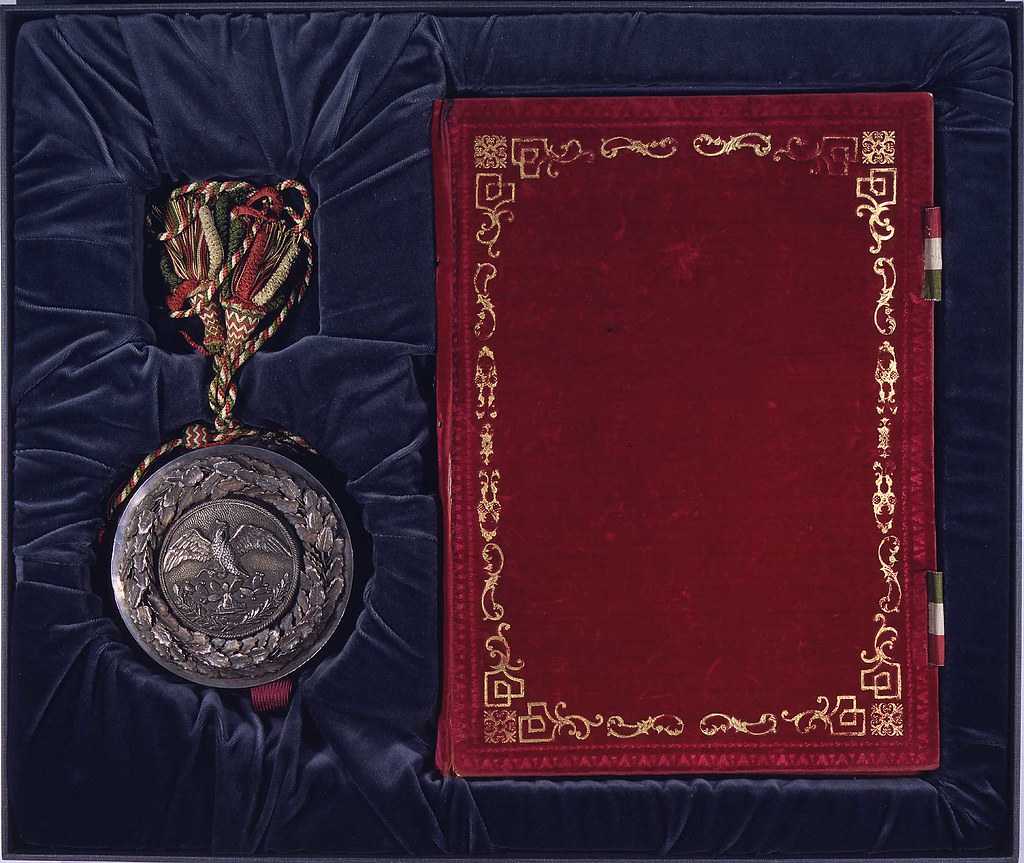The Adams-Onís Treaty: America’s Most Secretive Land Deal

Long before modern America existed, a secret diplomatic marathon lasting nearly three years fundamentally altered the shape of our nation. The Adams-Onís Treaty was signed on February 22, 1819, but ratification was postponed for two years because Spain wanted to use the treaty as an incentive to keep the United States from giving diplomatic support to the revolutionaries in South America. What most Americans don’t realize is that this seemingly routine diplomatic agreement between John Quincy Adams and Spanish minister Luis de Onís involved complex behind-the-scenes negotiations that would determine whether the United States would span from sea to shining sea. The stakes couldn’t have been higher – Florida’s annexation, Texas’s fate, and America’s Pacific coast ambitions all hung in the balance during these clandestine discussions.
The Hidden Financial Motivations Behind Spanish Concessions

Spain had been exhausted by the Peninsular War (1807–1814) against Napoleon in Europe and needed to rebuild its credibility and presence in its colonies, with revolutionaries in Central America and South America waging wars of independence since 1810. Spain was unwilling to invest further in Florida, encroached on by American settlers, and it worried about the border between New Spain. The Spanish crown was essentially broke, and Florida had become what modern analysts would call a “money pit.” Florida had become a burden to Spain, which could not afford to send settlers or staff garrisons, so Madrid decided to cede the territory to the United States in exchange for settling the boundary dispute along the Sabine River in Spanish Texas. What the public didn’t know was that Spain’s desperation made them willing to negotiate away vast territories just to avoid bankruptcy and further colonial rebellions.
The Continental Vision: Adams’s Secret Pacific Strategy

Adams had a larger ambition—to persuade Spain to settle all land claims across the continent to the Pacific Ocean, knowing that with that settled, the United States would have only Britain as a likely competitor for the Oregon Country. The southern boundary of Oregon would be a byproduct of the acquisition of Florida and a single-minded desire to have legal claim to territory on the Pacific Coast. This wasn’t just about acquiring Florida – Adams was playing a continental chess game. The key provisions established a “transcontinental” boundary west of the Mississippi River that allowed the United States direct access to the Pacific Ocean, with the line going north from the Sabine River; west along the Red River and Arkansas River, well above Santa Fe; then north and due west at 42 latitude, into the Oregon territory. Few realized that Adams was essentially drawing the blueprint for America’s manifest destiny decades before that phrase was even coined.
The Texas Sacrifice: What America Gave Up

In one of the treaty’s most controversial aspects, the United States voluntarily relinquished its claims to Texas – a decision that would haunt American politics for decades. Spain wanted the United States to relinquish claims to Texas, which it did in Article 3. The Adams-Onís (or Florida) Treaty, signed on February 22, 1819, by John Quincy Adams for the United States and by Luis de Onís for Spain, renounced the United States claim to Texas. This wasn’t a simple oversight – it was a calculated political move. Spanish Texas was not included, as many Americans had wished, because President James Monroe feared its acquisition would raise the question of the expansion of slavery. The slavery question was already so divisive that Monroe and Adams chose to sacrifice Texas rather than trigger a national crisis over whether it would become a slave state.
Florida’s Fugitive Slave Sanctuary Problem

U.S. politicians argued that Florida had become a sanctuary for fugitive slaves who had joined with Seminole bands to ward off American authorities seeking to capture them, with the U.S. government maintaining that the only solution to the problem was the acquisition of Florida. This created an urgent national security issue that few history books adequately explain. Florida wasn’t just a territorial prize – it was a haven for escaped slaves and hostile Native American tribes who regularly conducted raids into Georgia and other southern states. Andrew Jackson was sent to Florida to punish Seminoles for their purported raids into Georgia, a conflict that monkey-wrenched the diplomats’ negotiations and argued for a prompt completion of the treaty. Jackson’s unauthorized military actions in Florida actually strengthened Adams’s negotiating position by demonstrating America’s willingness to take Florida by force if necessary.
The Five Million Dollar Compensation Mystery

One of the treaty’s most puzzling aspects involved a complex financial arrangement that historians still debate. The treaty established the boundary of U.S. territory and claims through the Rocky Mountains and west to the Pacific Ocean, in exchange for Washington paying residents’ claims against the Spanish government up to a total of 5 million Spanish dollars (purchasing power equivalent to US$102,700,000 in 2024). The United States did agree to cancel up to $5 million in claims against Spanish citizens in Florida. This wasn’t just about money – it was about legitimizing land grants and property claims that could have created legal chaos for decades. In the treaty, the United States agreed to assume payment for up to $5 million in spoliation claims made by American merchants against Spain. Essentially, America was buying not just land, but legal peace of mind.
The Delayed Ratification: A Two-Year Diplomatic Game

Ratification was postponed for two years because Spain wanted to use the treaty as an incentive to keep the United States from giving diplomatic support to the revolutionaries in South America. On February 24, the U.S. Senate ratified the treaty unanimously, but because of Spain’s stalling, a new ratification was necessary and this time there were objections, with Henry Clay and other Western spokesmen demanding that Spain also give up Texas. The delay wasn’t just bureaucratic foot-dragging – it was strategic manipulation. Spain was desperately trying to use American desire for Florida as leverage to prevent U.S. support for Latin American independence movements. The proposal was defeated by the Senate, which ratified the treaty a second time on February 19, 1821, following ratification by Spain on October 24, 1820, with ratifications exchanged three days later.
The Mexican Independence Complication

The treaty remained in full effect for only 183 days: from February 22, 1821, to August 24, 1821, when Spanish military officials signed the Treaty of Córdoba acknowledging the independence of Mexico; Spain repudiated that treaty, but Mexico effectively took control of Spain’s former colony. The Treaty of Limits between Mexico and the United States, signed in 1828 and effective in 1832, recognized the border defined by the Adams–Onís Treaty. This created an unprecedented situation where a treaty negotiated with one country suddenly applied to an entirely different nation. Spain finally recognized the independence of Mexico with the Treaty of Córdoba signed on August 24, 1821, and while Mexico was not initially a party to the Adams–Onís Treaty, in 1831 Mexico ratified the treaty by agreeing to the 1828 Treaty of Limits with the U.S. Mexico inherited both the benefits and obligations of Spanish colonial treaties without having participated in their negotiation.
The Guadalupe Hidalgo Connection: Completing the Continental Puzzle

The Adams-Onís Treaty’s legacy directly influenced America’s next major border transformation through the Mexican-American War. The Treaty of Guadalupe Hidalgo was signed on February 2, 1848, ending the Mexican-American War, with Mexico ceding 55 percent of its territory, including present-day California, Nevada, Utah, New Mexico, most of Arizona and Colorado, and parts of Oklahoma, Kansas, and Wyoming. Mexico also relinquished all claims to Texas, and recognized the Rio Grande as the southern boundary with the United States. What started as Adams’s continental vision in 1819 reached fruition nearly three decades later. With the annexation of more than 525,000 square miles of land, the Treaty of Guadalupe Hidalgo extended the boundaries of the United States west to the Pacific Ocean, and this agreement, along with the 1853 Gadsden Purchase, created the southern border of the present-day United States. The U.S. government paid Mexico $15 million.
The Gadsden Purchase: The Final Border Adjustment

The Gadsden Purchase was an agreement between the United States and Mexico, finalized in 1854, in which the United States agreed to pay Mexico $10 million for a 29,670 square mile portion of Mexico. Santa Anna refused to sell a large portion of Mexico, but needed money to fund an army to put down ongoing rebellions, so on December 30, 1853 he signed a treaty stipulating that the United States would pay $15 million for 45,000 square miles, though the new treaty reduced the amount paid to Mexico to $10 million and the land purchased to 29,670 square miles. The Gadsden Purchase also resolved an outstanding border dispute between Mexico and the United States, and marked the last adjustment to the border between the two countries, creating the southern border of the present-day United States. This final purchase completed the continental vision that Adams had first articulated in his secret negotiations with Spain decades earlier.
Modern Border Challenges: The 1970 Boundary Treaty Under Attack

The legacy of these historical border treaties continues to shape contemporary politics in unexpected ways. In June 2023, the international boundary treaty governing the U.S.-Mexico border came under attack from Gov. Greg Abbott’s Operation Lonestar, with nonresident scholars outlining the treaty’s history and examining key issues — advising on merits of recent challenges and long-term implications for the binational relationship. Texas Gov. Greg Abbott deployed a string of huge buoys in the Rio Grande near Eagle Pass, Texas, ostensibly to deter migrants as part of his controversial Operation Lonestar, drawing national attention to a little-known treaty setting the boundary between the United States and Mexico: the 1970 “Treaty to Resolve Pending Boundary Differences and to Maintain the Rio Grande and the Colorado Rivers as the International Boundary.” These recent conflicts demonstrate how treaty obligations negotiated centuries ago continue to constrain state and federal action at the border today.
Contemporary Water Wars: The 1944 Treaty Crisis

Another treaty legacy creating modern tensions involves water rights that date back to World War II era negotiations. Eighty years ago, the United States and Mexico worked out an arrangement to share water from the two major rivers that run through both countries: the Rio Grande and the Colorado. The treaty was created when water wasn’t as scarce as it is now. Mexico is some 265 billion gallons of water behind on its deliveries to the United States, with the U.S. commissioner noting Mexico is “at their lowest levels ever” in the treaty’s history. The treaty operates in five-year cycles, and the current deadline for deliveries isn’t until October 2025, but “the question is that they’re so far behind, it will be very difficult, if not statistically impossible, for them to make up that difference.” Climate change and growing populations have turned what seemed like generous water-sharing agreements into sources of international friction.
The Trump Administration’s Border Security Evolution

Recent developments show how historical treaty obligations intersect with modern border security priorities. President Donald Trump delayed implementing 25% tariffs on Mexico and Canada for one month in exchange for the two countries sending added personnel to their U.S. borders. Trump and Mexican President Claudia Sheinbaum announced the pause after what Trump described as a “very friendly conversation,” with Trump saying he would pause the tariffs in exchange for Mexico and Canada investing more in border security, including Mexican President Sheinbaum’s plan to send 10,000 soldiers to the border. The current administration has directed the Secretaries of Defense and Homeland Security to deploy and construct temporary and permanent physical barriers to ensure complete operational control of the southern border, and to deploy sufficient personnel along the southern border. These modern negotiations echo the territorial horse-trading that characterized the Adams-Onís Treaty negotiations two centuries ago.
The Lasting Impact of Secret Diplomacy

The secret treaties that redrew America’s borders weren’t just about lines on maps – they were about competing visions of what America could become. From Adams’s transcontinental ambitions to modern water disputes and border security challenges, these historical agreements continue to shape contemporary policy debates. The Adams-Onís Treaty’s sacrifice of Texas led directly to the Texas Revolution and Mexican-American War, while its Pacific coast provisions enabled California’s gold rush and America’s emergence as a Pacific power. Today’s border conflicts, whether over concertina wire in the Rio Grande or water delivery shortfalls, all trace back to treaty obligations negotiated in secret diplomatic chambers centuries ago. What started as closed-door bargaining between a few diplomats ultimately determined the geographic destiny of a continent and the fate of millions of future Americans.






